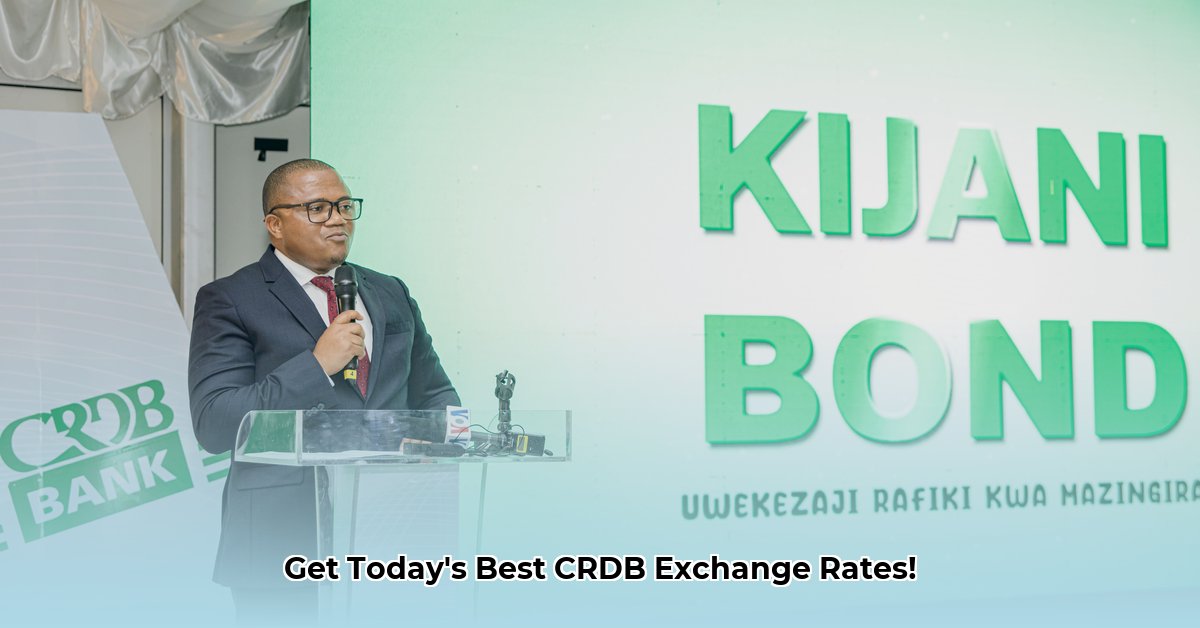
CRDB Foreign Exchange Rates: Current Data and Analysis
Understanding foreign exchange (FX) rates is crucial for individuals and businesses conducting international transactions. This article provides current CRDB Bank foreign exchange rates, analyzes influencing factors, and offers strategies for managing exchange rate risk. We focus on providing clear, concise, and factual information to aid informed financial decision-making.
Today's CRDB Exchange Rates (Example Data – Always Verify!)
Please note: The following data is for illustrative purposes only. Always check CRDB's official website (https://crdbbank.co.tz/) or a branch for the most up-to-date exchange rates. Exchange rates are highly volatile and change constantly. Data below is as of [Insert Date and Time of Data Collection].
| Currency | Currency Code | Buying Rate (TZS) | Selling Rate (TZS) |
|---|---|---|---|
| US Dollar | USD | 2523.00 | 2619.00 |
| Euro | EUR | 2619.00 | 2919.00 |
| British Pound | GBP | 3100.00 | 3300.00 |
| South African Rand | ZAR | 150.00 | 160.00 |
| Kenyan Shilling | KES | 18.00 | 20.00 |
The difference between the buying and selling rates represents CRDB's margin – their profit from facilitating currency exchange. Why is this margin important? It directly impacts the final cost of your transaction.
Factors Influencing CRDB Exchange Rates
Several interwoven factors influence CRDB's daily exchange rates. Understanding these factors can help you better anticipate potential shifts.
Global Economic Conditions: Major economic events, such as interest rate adjustments by central banks (like the US Federal Reserve or the European Central Bank), significantly impact currency values. For example, a strong US dollar often weakens other currencies. Have you ever considered the ripple effects of global economic news on your personal finances?
Tanzanian Economic Performance: The strength of the Tanzanian shilling (TZS) is tied to the nation's economic health. Robust economic growth, low inflation, and political stability tend to strengthen the TZS, while economic challenges can weaken it.
Geopolitical Factors: Global and local political events, such as elections or international conflicts, can trigger significant currency fluctuations as investors react to perceived risks. This highlights the interconnectedness of global economics and international relations.
Supply and Demand: Like any market, currency exchange is governed by supply and demand. High demand for a particular currency increases its value, while low demand decreases it. This fundamental economic principle underlies many daily market movements, influencing not only currency but also other assets.
Key Takeaways and Recommendations
Continuous Monitoring: Consistently track CRDB's official exchange rates to make informed decisions, especially for larger transactions. How many times do you check the rates before making a large currency exchange?
Informed Decision-Making: A well-informed understanding of the influencing factors – global economics, national policies and the simple forces of supply and demand – can contribute to better financial planning. What steps are you taking to stay informed about potential market shifts that could affect your financial plans?
Professional Guidance: For substantial international transactions, consulting a financial advisor specializing in foreign exchange is prudent. Remember, exchange rates are an integral part of international business.
Disclaimer: This information is for informational purposes only and should not be considered financial advice. Always consult CRDB's official sources and, if necessary, a qualified financial advisor before making any financial decisions. Exchange rates are subject to constant change.